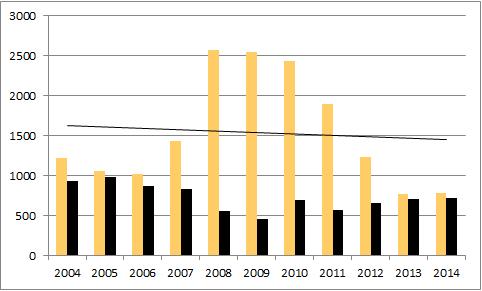Do you know how many construction cranes are towering over Seattle building our future offices, condos, and retail centers? 20? 25? Believe it or not, according to the Rider Levett Bucknall Crane Index, which produces the North American RLB Crane Index, there are 42 cranes hard at work, altering Seattle’s skylines.
The Crane Index is published twice a year. It tracks the number of fixed cranes in major cities across North America and is an indicator of the construction workload in an area. Residential projects currently make up less than half of the craned projects in the Seattle area (Lake Washington to West Seattle and Northgate to Boeing Field). The index does not include Bellevue and Everett. According to the Puget Sound Business Journal, the Boeing 777X facility has 17 cranes on site alone.
It is no secret that this has been the busiest construction period that Downtown Seattle has seen in over a decade. While the RLB Crane Index indicated that the number of cranes decreased in Seattle since their last report at the beginning of the year (by nine), the number is expected to increase again according to the Puget Sound Business Journal. A number of projects have recently broken ground or are in the permitting phase.
What does this mean for the Seattle real estate market?
- An increase in office space and retail space means more employees who will need housing.
- An increase in residential units including apartments and condos will fulfill some of that need.
- An increase in transportation facilities will help people move throughout the region faster, making housing in the outlying areas more attractive.
- Some projects are for medical, hotels, and other infrastructure (such as the Elliott Bay Seawall) which will support Puget Sound residents.
I am excited for what Seattle’s economic future has in store! I predict demand will continue to be high in the coming years. What does this mean for you? Give me a call: (206) 226-5300 or send me an email: sold@windermere.com.



